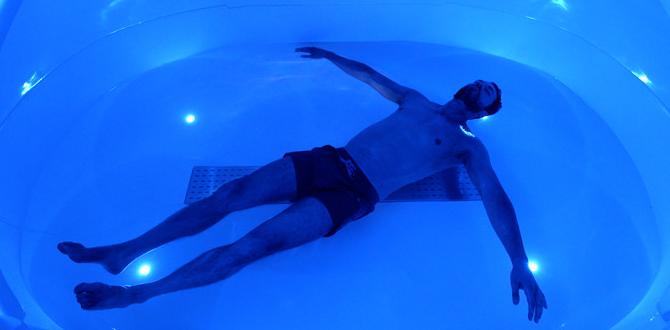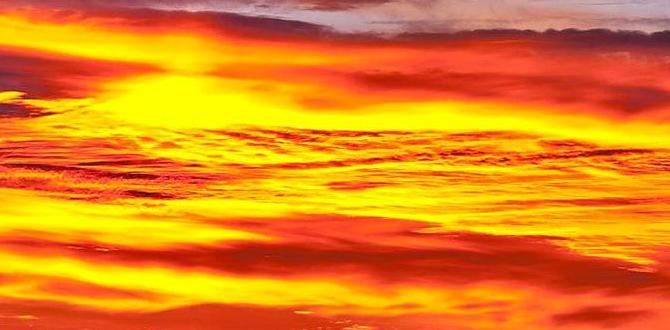The best time to visit Bavaria without crowds is during the shoulder seasons: April to May and September to October. These periods offer pleasant weather for exploring, fewer tourists at popular attractions, and often better prices.
Thinking about a magical Bavarian adventure but dreading the jostling crowds? You’re not alone! Many travelers dream of seeing Bavaria’s storybook castles, lush landscapes, and charming towns, but the thought of battling swarms of tourists can dampen the excitement. Finding that sweet spot where you can soak in the beauty without feeling overwhelmed is key to a truly memorable trip. This guide is designed to help you pinpoint the perfect time to visit Bavaria, ensuring a relaxed and enjoyable experience. Let’s dive into how you can craft your ideal Bavarian getaway.
Why Timing is Everything for a Crowd-Free Bavarian Escape
Bavaria, Germany’s largest state, is a treasure trove of attractions. From the majestic Neuschwanstein Castle to the vibrant city of Munich and the stunning Alps, its appeal is undeniable. However, this popularity means that certain times of the year can feel exceptionally busy.
Peak tourist seasons, typically summer and major holiday periods like Christmas markets, see a surge in visitors. This can lead to longer queues, higher accommodation prices, and a less intimate experience of Bavaria’s wonders. Visiting outside these peak times allows for a more authentic and relaxed immersion in Bavarian culture and scenery. It’s about finding the balance between good weather and fewer people, making your journey smoother and more enjoyable – especially if you’re traveling with family and need to manage things like packing essentials or ensuring comfort for everyone, including those who might benefit from discreet personal care items like adult or child diapers for added peace of mind.
Understanding Bavaria’s Seasons and Their Crowd Levels
To find your perfect travel window, it’s helpful to understand what each season in Bavaria typically brings.
Spring (April – May): Awakening Beauty with Fewer Faces
Spring in Bavaria is a delightful time as nature awakens. The landscapes turn a vibrant green, flowers begin to bloom, and the weather becomes increasingly pleasant.
Pros:
Mild temperatures, perfect for outdoor activities.
Lush, green scenery after winter.
Fewer crowds than summer, especially outside of Easter holidays.
Often more affordable accommodation and flights.
Enjoyable for city exploration and hiking.
Cons:
Early spring (March/early April) can still be chilly with a chance of snow, especially in the Alps.
Some mountain hiking trails might still be closed due to lingering snow.
Weather can be unpredictable, with rain showers possible.
Summer (June – August): Sunshine and Summer Swarms
Summer is Bavaria’s most popular season, blessed with warm temperatures and long daylight hours. This is when Bavaria truly comes alive with festivals and outdoor events.
Pros:
Warmest weather, ideal for outdoor adventures like hiking and lake activities.
Longest daylight hours for sightseeing.
All attractions and hiking trails are fully accessible.
Vibrant atmosphere with numerous festivals.
Cons:
Highest crowd levels at popular attractions like Neuschwanstein Castle and in cities like Munich.
Accommodation and flight prices are at their peak.
Can be quite hot, which might be uncomfortable for some, and require extra planning for personal comfort.
Longer wait times for attractions and restaurants.
Autumn (September – October): Golden Hues and Gentle Breezes
Autumn offers a spectacular display of fall foliage, with leaves turning brilliant shades of red, orange, and gold. The weather remains pleasant, and the summer crowds begin to dissipate.
Pros:
Beautiful autumn colors in the countryside.
Crisp, comfortable temperatures, excellent for sightseeing.
Crowds are significantly reduced after the summer holidays.
Often good value for money on accommodation.
Perfect for scenic drives and enjoying Bavarian beer gardens before they close for winter.
Cons:
Daylight hours start to shorten.
Weather can become more unpredictable, with a higher chance of rain and cooler temperatures as the season progresses.
Snow can start to dust the higher mountain peaks late in October.
Winter (November – March): Cozy Charm and Festive Spirit (with Peak Crowds for Holidays)
Winter transforms Bavaria into a magical, snowy wonderland, famous for its charming Christmas markets. While outdoor activities like skiing are popular, the period around Christmas and New Year sees significant crowds.
Pros:
Stunning snow-covered landscapes.
Magical Christmas markets (late November through December).
Excellent opportunities for winter sports like skiing and snowboarding.
Cozy atmosphere in traditional Bavarian inns.
Cons:
Very cold temperatures, requiring warm clothing and careful preparation.
Crowds can be very high during Christmas market season and the festive period.
Shorter daylight hours significantly impact sightseeing time.
Some attractions or hiking trails may be closed or difficult to access. Prices can increase significantly around holidays.
The Sweet Spot: Bavaria’s Best Bet for Fewer Crowds
Based on the seasonal breakdown, the ideal times to visit Bavaria if your primary goal is to avoid crowds are the shoulder seasons. These periods cleverly balance good weather with a significant drop in tourist numbers.
Spring: The Gentle Awakening (April to May)
This is when Bavaria shakes off its winter slumber. The first blossoms appear, the fields turn emerald green, and the air is fresh. While early April might still hold a whisper of winter’s chill, by mid-April and into May, the weather is typically mild and incredibly pleasant for exploring.
The major benefit here is the crowd factor. You’ll find attractions like Neuschwanstein Castle, the royal palaces, and the charming streets of Munich much more accessible. Imagine strolling through the English Garden without feeling like you’re in a sea of people, or exploring the historic town of Rothenburg ob der Tauber at a leisurely pace.
This is also a fantastic time for outdoor enthusiasts. Hiking trails begin to open up, and the alpine scenery is breathtaking without the summer humidity. For those who appreciate comfort and reliability in travel, like ensuring you have suitable clothing and perhaps even discreet personal care items such as adult or child diapers for longer excursions or those with specific needs, spring offers a stress-free backdrop. The unpredictable nature of spring weather means packing layers is key – something we at Journey Essentials always advocate for a comfortable trip.
Autumn: The Golden Farewell (September to October)
As summer bows out, Bavaria enters a phase of breathtaking beauty. The forests erupt in a symphony of golden, red, and orange hues, making for absolutely stunning drives and photography opportunities. The weather in September is often still quite warm and sunny, akin to a prolonged summer, but with a refreshing crispness to the air. October brings cooler temperatures and that quintessential autumn feel.
The massive influx of summer tourists has subsided, leaving popular spots significantly less congested. You can wander through the fairytale towns, visit Oktoberfest (if you time it right at the very end of September/early October), or enjoy a peaceful boat ride on Lake Starnberg with ease.
This is arguably the most visually spectacular time to visit Bavaria, and the reduced crowds enhance the experience immeasurably. For families, managing children can be easier when not navigating dense crowds. Packing for autumn requires a similar approach to spring: layers are essential. A good waterproof jacket is advisable, and for any longer trips or excursions, having easily accessible essentials is always a good travel strategy.
When to Actively Avoid Crowds in Bavaria
While the shoulder seasons are great, there are specific times when you might want to reconsider if avoiding crowds is your absolute top priority.
Peak Summer (July – August): This is the peak of peak season. Expect large numbers everywhere.
Christmas Market Season (Late November – December 24th): While magical, popular Christmas markets in Munich, Nuremberg, and Dresden (though Dresden is in Saxony, it’s a popular add-on) draw huge crowds.
Major Bavarian Festivals: Oktoberfest in Munich (late September to early October) is world-famous and incredibly crowded.
Easter Holidays: Many Germans take advantage of the Easter break, leading to increased domestic travel and crowds at popular destinations.
School Holidays: Be mindful of German and European school holiday periods, as they can significantly impact crowd levels. You can check official German school holiday calendars for reference.
The “Least Crowded” Times (with Caveats)
If you are desperate to experience Bavaria with as few people as possible, consider these times, but be prepared for the trade-offs:
Early to Mid-March: Winter is receding, but the spring bloom hasn’t fully begun. Ski resorts will still be active, but other tourist areas will be quietest. The weather can be cold and unpredictable, and many outdoor attractions might not be fully operational or accessible.
Early November: After the autumn colors fade and before the Christmas market rush begins, there’s a brief lull. It can be chilly and grey, and daylight hours are short. This is a time for cozy indoor activities, museum visits, and enjoying the quiet atmosphere of Bavarian villages.
Planning Your Crowd-Free Bavarian Itinerary: A Step-by-Step Guide
Let’s put this knowledge into action. Here’s how to plan your trip to Bavaria focusing on avoiding crowds.
Step 1: Choose Your Ideal Shoulder Season Window
Review the pros and cons of spring and autumn and decide which season best suits your interests and tolerance for weather.
For wildflowers and milder spring activities: Aim for late April to late May.
For stunning fall foliage and crisp air: Aim for mid-September to mid-October.
Step 2: Book Accommodation and Transportation in Advance
Even in shoulder seasons, popular boutique hotels or well-located apartments can book up. Booking flights and accommodation three to six months in advance is a good strategy. Look for places a little outside the absolute center of major towns for potentially quieter surroundings and better value. Consider smaller towns like Füssen, Garmisch-Partenkirchen, or Bamberg for a more tranquil experience away from big city hustle.
Step 3: Prioritize Key Attractions and Visit Early or Late
Even in shoulder seasons, some attractions will naturally be busier. For iconic spots like Neuschwanstein Castle or the Marienplatz in Munich, plan to visit either first thing in the morning (as soon as they open) or in the late afternoon, closer to closing time. This strategy can significantly reduce the time spent waiting.
Step 4: Explore Off-the-Beaten-Path Destinations
Bavaria is brimming with charming villages and natural beauty beyond the headline attractions. Consider exploring:
The Romantic Road (beyond Rothenburg ob der Tauber): While Rothenburg is popular, other towns like Dinkelsbühl or Nördlingen offer similar medieval charm with fewer visitors.
Bavarian Lakes: While Starnberg and Chiemsee are well-known, consider smaller lakes like the Tegernsee or the Königssee for breathtaking scenery with a potentially smaller crowd presence, especially outside of weekend or midday peaks.
Smaller Cities: Instead of solely focusing on Munich, explore cities like Augsburg, Regensburg (a UNESCO World Heritage site), or Passau. They offer rich history and culture with a more relaxed vibe.
Step 5: Embrace Local Transport and Walking
Renting a car offers flexibility, but parking in popular areas can be a challenge. Bavaria has an excellent and extensive public transportation system, including trains and buses. Familiarize yourself with the Deutsche Bahn (German Rail) network for inter-city travel. Within towns and cities, walking or using local public transport is often the most efficient and enjoyable way to get around, allowing you to soak in the atmosphere without the stress of traffic or parking.
Step 6: Pack Smart for Comfort and Preparedness
Regardless of when you visit, comfortable travel is paramount. This includes having the right clothing, comfortable walking shoes, and any personal items that ensure your peace of mind. For travelers who might need them, discreet and reliable personal care items like adult diapers or child diapers can make a significant difference in enabling stress-free exploration and longer outings. Knowing you have these essentials sorted allows you to focus on enjoying Bavaria’s beauty. Pack layers – spring and autumn weather can change rapidly.
What to Pack for Bavaria in Shoulder Seasons
Packing for Bavaria during April-May or September-October requires a layered approach to handle variable weather.
Clothing:
Base Layers: Moisture-wicking tops and leggings.
Mid-Layers: Fleece jackets, sweaters, or cardigans.
Outerwear: A waterproof and windproof jacket is essential. A packable down jacket can be great for cooler evenings.
Bottoms: Comfortable trousers or sturdy jeans. Depending on your activities, consider waterproof hiking pants.
Shirts: Long-sleeved shirts and a few t-shirts.
Footwear: Comfortable, broken-in walking shoes or hiking boots. Waterproof shoes are highly recommended.
Accessories: A scarf, gloves (especially for early spring/late autumn), and a hat can be very useful.
Essentials:
Backpack: A small daypack for excursions.
Reusable Water Bottle: Stay hydrated without constant purchases.
Camera: To capture those stunning Bavarian views.
Adapter & Power Bank: For your electronic devices.
Personal Care Items: Sunscreen, lip balm, basic first-aid kit, and any personal medications. For added travel confidence, consider packing discreet and comfortable personal care items like adult or child diapers, especially for long travel days or extensive sightseeing. Knowing these are readily available can alleviate stress and allow you to fully immerse yourself in the experience.
Travel Documents: Passport, visa (if applicable), travel insurance details, and copies of bookings.
Sample Bavaria Itinerary (Shoulder Season Focus)
This sample itinerary focuses on key experiences while minimizing crowd encounters by opting for shoulder season and strategic timing.
Duration: 7 Days
Focus: Culture, History, Scenic Beauty
Day 1: Arrival in Munich & Bavarian Charm
Arrive at Munich Airport (MUC).
Transfer to your hotel. Consider staying slightly outside the very immediate city center for a quieter base.
Afternoon: Explore the Marienplatz and witness the Glockenspiel. Visit the Viktualienmarkt for local treats.
Evening: Enjoy a traditional Bavarian dinner at a less touristy beer hall.
Day 2: Munich’s Royal & Artistic Side
Morning: Visit the Residenz, the former royal palace, ideally right at opening time.
Afternoon: Explore the English Garden, perhaps renting a paddle boat if the weather is amiable.
Late Afternoon: Visit a museum like the Alte Pinakothek or the Deutsches Museum.
Day 3: Fairytale Castles of Füssen
Day trip to Füssen. Take an early train from Munich.
Visit Neuschwanstein and Hohenschwangau castles. Book tickets online well in advance for a specific time slot to avoid long waits at the ticket center. Aim for the earliest available slots.
Explore the charming town of Füssen.
Return to Munich in the evening.
Day 4: Scenic Alps – Garmisch-Partenkirchen
Take a morning train to Garmisch-Partenkirchen.
Ascend the Zugspitze, Germany’s highest peak, via cable car or cogwheel train for breathtaking panoramic views. Consider going early to beat any potential tour groups.
Alternatively, explore the Partnach Gorge (Partnachklamm) – a spectacular natural wonder.
Enjoy the mountain air and charming town.
Return to Munich.
Day 5: Enchanting Rothenburg ob der Tauber (Romantic Road)
Travel by train to Rothenburg ob der Tauber. This may involve a change of trains.
Walk the medieval town walls, explore the Plönlein, and visit the Criminal Justice Museum.
Wander the cobblestone streets and enjoy the atmosphere. While popular, visiting in the shoulder season makes a significant difference.
Consider staying overnight in Rothenburg for a more peaceful evening and morning experience, or return to Munich.
Day 6 & 7: Relaxation or Further Exploration
Option 1 (Relaxation): Spend more time in a town you enjoyed or explore a local park. Perhaps visit a less-known lake or a smaller town like Landsberg am Lech.
Option 2 (Deeper Dive): Take a day trip to another UNESCO site like Regensburg, known for its well-preserved medieval city center and impressive cathedral.
Option 3 (Specific Interest): If you love cars, visit the BMW Welt and Museum in Munich.
The key is to pre-book any high-demand tickets and to be flexible. Remember to pack for varied weather and consider your personal comfort needs, ensuring you have everything you need for stress-free days of exploration.
Frequently Asked Questions About Visiting Bavaria Without Crowds
Q1: Is it ever truly empty in Bavaria?
While “empty” is a strong word, you can significantly reduce your experience of crowds by visiting during the shoulder seasons (April-May, Sept-Oct) and avoiding major holidays and school breaks. You’ll find popular spots much more manageable.
Q2: Which month is the absolute best for fewer crowds and good weather in Bavaria?
For a strong combination of pleasant weather and lower crowd levels, mid-September to early October is often considered ideal. The autumn colors are magnificent, and the summer rush has ended. Late April to May is also excellent, especially if you prefer spring blooms and milder temperatures.







